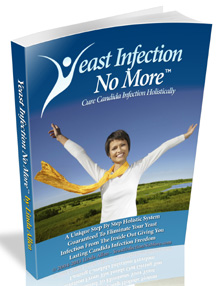Is There A Home Or Natural Remedy For Chronic Yeast Infections?
Free Video Reveals 1 Weird Tip To Quickly Cure Your Candida Overgrowth & Enjoy Permanent Freedom From Yeast Infections In As Little As 12 Hours - Guaranteed!
>> Yeast Infection Guaranteed Treatment Click Here <<
A yeast infection is a condition caused by the fungus Candida albicans. A vaginal yeast infection is an excess growth of yeast cells in the vagina. Learning to recognize the symptoms of vaginal yeast infection is vital before women attempt self-treatment. The most common symptom of a vaginal yeast infection is itching in the vaginal and/or vulvar area. Yeast infection is so common that 3/4 women will have it in their life time. Treating a yeast infection is simple, but it's important to visit your doctor for the right diagnosis.
Natural Treatment
Instead of reaching for a costly over the counter medication; why not use a natural remedy for yeast infection instead? Most women would love to know if there was a natural yeast infection cure, and there are some natural remedies for a yeast infection. The first one is dietary natural cure for yeast infection - for example Cranberry pills, which can be found at natural food stores, can be taken throughout the duration of a yeast infection as a supplement. Among the most effective natural treatments for yeast infection is the use of probiotics, or what is commonly called friendly bacteria or beneficial bacteria. Acidophilus is an ideal natural cure for yeast infection, as it is a natural probiotic. The advantage of a natural approach to fighting yeast infection, is it allows control over the yeast permanently and puts your immune system back on track. If you are in any way uncertain, consult a health care provider to modify your diet and/or treat this condition directly with an effective, all natural yeast infection control product.
Who Doesn't Want a Natural Remedy for a Yeast Infection?
Whether it's a dislike for man-made chemicals or just plain embarrassment, many women seek a natural remedy for a yeast infection. One well known home remedy for yeast infection is the regular use of curds or yogurt. This home remedy for a yeast infection combats the fungus (yeast) that is responsible for the infection. Curds and yogurt are foods identified to be the most effective home remedy for yeast infection. Some believe that the best way to use yogurt as a natural remedy for yeast infection is by inserting plain yogurt into the vaginal area. Taking a tampon dipped in yogurt and inserting it in the vagina, twice a day, is one of the most recommended home remedy for yeast infection.
Natural Treatment for Yeast Infections
The treatment for yeast infection varies from person to person. Most of these candidal infections are superficial and clear up easily with treatment but their causes are quite different, their symptoms similar, and treatment varies. Try to avoid intercourse until you have completed treatment and the symptoms have subsided. It is important to receive proper treatment for your yeast infection, and it is very important to consult with your doctor before treatment. If you don't complete treatment correctly you may not get rid of the yeast infection. Women who do not improve after treatment with a standard oral or vaginal treatment for yeast infection should be reexamined by their physician. With proper treatment, the infection usually clears up in a few days to a week.
If the yeast infection is left untreated, the symptomatic pains of this infection may continue and this may worsen the severity. One of the main causes of recurring chronic yeast infection is sexual activity. If your yeast infection is chronic, even after a change of diet and the use of herbal therapies, have your male sex partner evaluated. If a yeast infection is left untreated it can progress to a bacterial infection, which is more serious.
As embarrassing as this can make some women feel, you must realize that the yeast infection is not your fault. Yeast infection is merely an overgrowth of yeast in or on the body, and yeast infection is able to affect ANY part of the human body. Many homeopathic physicians feel a systemic yeast infection is the most overlooked and misdiagnosed disease in medicine. If you have symptoms of a yeast infection, see a doctor immediately so they can determine if a yeast infection is the cause of your symptoms, and suggest a course of (hopefully natural) treatment.
Kathy Hildebrand is a professional writer who is easily bored with her "day job" assignments. So, she researches anything and everything of interest and starts writing. Writing about an extremely wide variety of subjects keeps her skills sharp, and gives her food for thought on future paid writing assignments.
Labels: a_yeast_infection_look_like, acidophilus_yeast_infection, breast_yeast_infection, canine_yeast_infection

